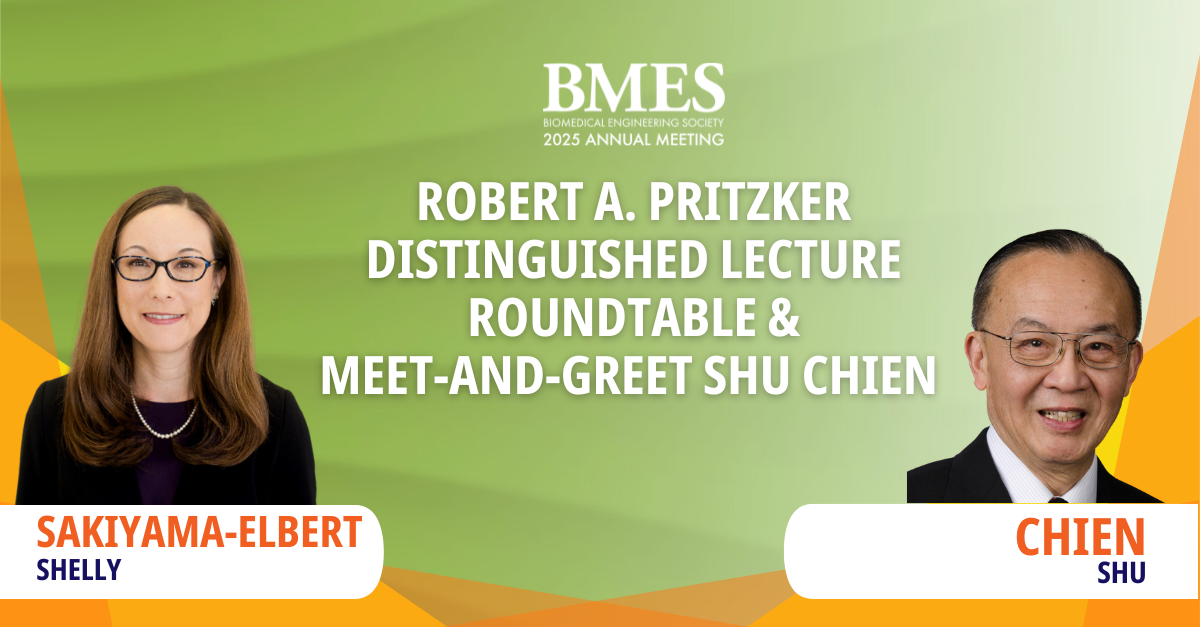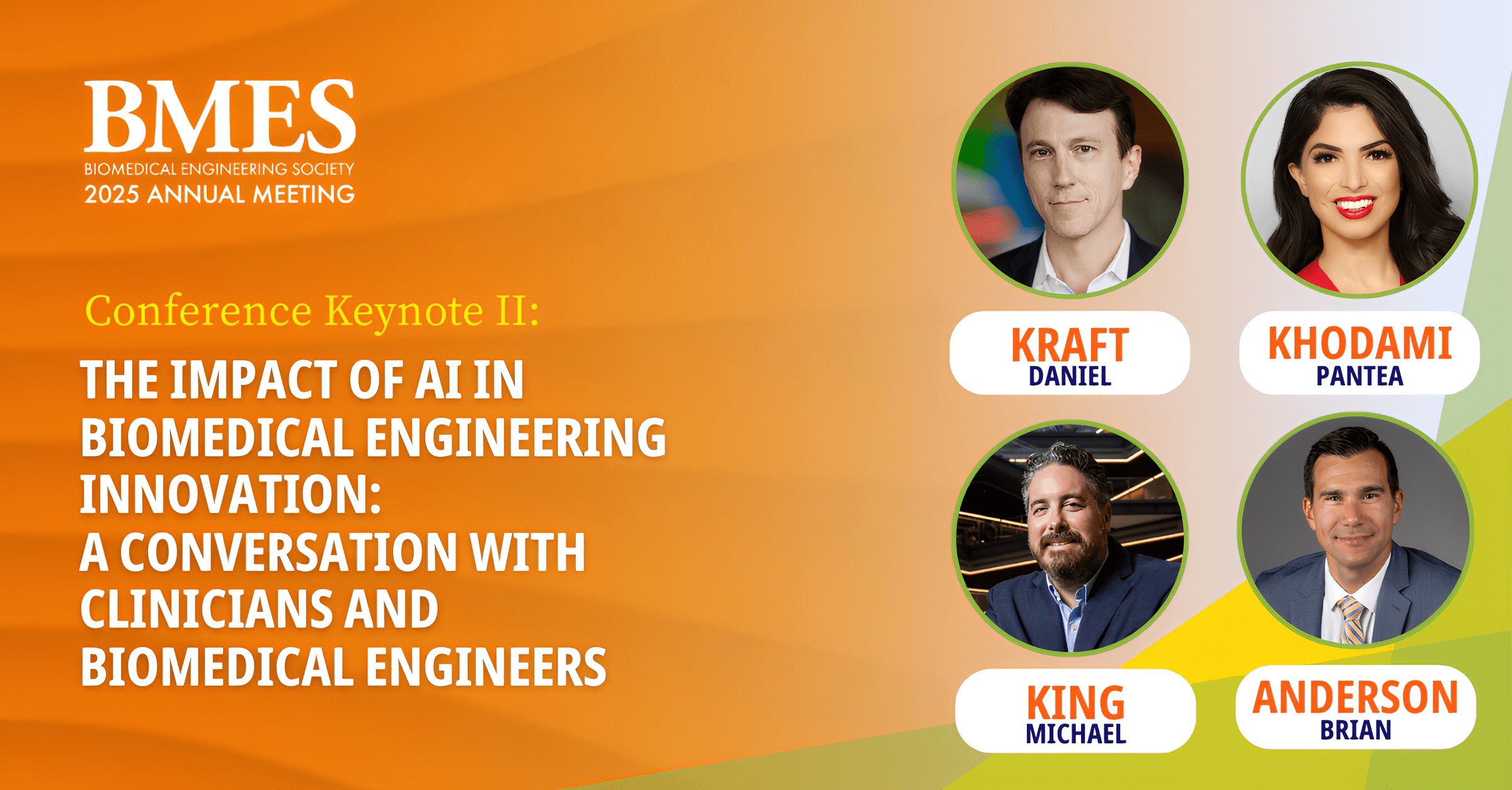Watch Now: Robert A. Pritzker Distinguished Lecture Roundtable & Meet-and-Greet Shu Chien
As the biomedical engineering community continues to evolve, the need for forward-looking dialogue around research, innovation, and funding has never...
BMES serves as the lead society and professional home for biomedical engineers and bioengineers. BMES membership has grown to over 6,700 members, with more than 110+ BMES Student Chapters, three Special Interest Groups (SIGs), and four professional journals.
Welcome to the BMES Hub, a cutting-edge collaborative platform created to connect members, foster innovation, and facilitate conversations within the biomedical engineering community.
Discover all of the ways that you can boost your presence and ROI at the 2024 BMES Annual Meeting. Browse a range of on-site and digital promotional opportunities designed to suit any goal or budget that will provide maximum impact.
Researchers at the Washington University in St. Louis have completed a study to combine electrocardiographic imaging (ECGI), a noninvasive method developed at the university, with tagged MRI to study the electromechanics of healthy hearts in living humans.
The data could be helpful in designing and validating mathematical models of the heart's electromechanics for the study of human cardiac electrophysiology and mechanics, according to a university article.
Yoram Rudy, the Fred Saigh Distinguished Professor of Engineering in the McKelvey School of Engineering, and Christopher Andrews, a postdoctoral research scholar in the Department of Biomedical Engineering led the study. Rudy is a BMES member.
ECGI is a noninvasive imaging method that maps the heart's electrical activity using electrocardiographic measurements from about 250 body surfaces together with the heart-torso geometry from anatomical MRI or computed tomography (CT) scans, according to the article. The electrocardiographic measurements and geometrical information are combined mathematically to create maps of the cardiac electrical excitation. Tagged MRI measures displacement of heart-muscle regions, providing a 3D image of cardiac strain during contraction.
The study conducted ECGI and tagged MRI on 20 healthy adult volunteers at Washington University in St. Louis, making it the largest ECGI study of healthy adults to date and the first study of electromechanics coupling in living normal human hearts, according to the article.
Read more HERE.
View a video about the research HERE.

As the biomedical engineering community continues to evolve, the need for forward-looking dialogue around research, innovation, and funding has never...

As federal research funding landscapes continue to shift, many in the biomedical engineering community are facing growing uncertainty and widening...

Artificial intelligence is redefining the future of biomedical engineering—revolutionizing diagnostics, advancing personalized medicine, and...

1 min read
A team of researchers led by Virginia Commonwealth University College of Engineering and the University of Florida has found a possible mechanical...

1 min read
A new Northwestern University study has discovered that the packing of the three-dimensional genome structure, called chromatin, controls how cells...